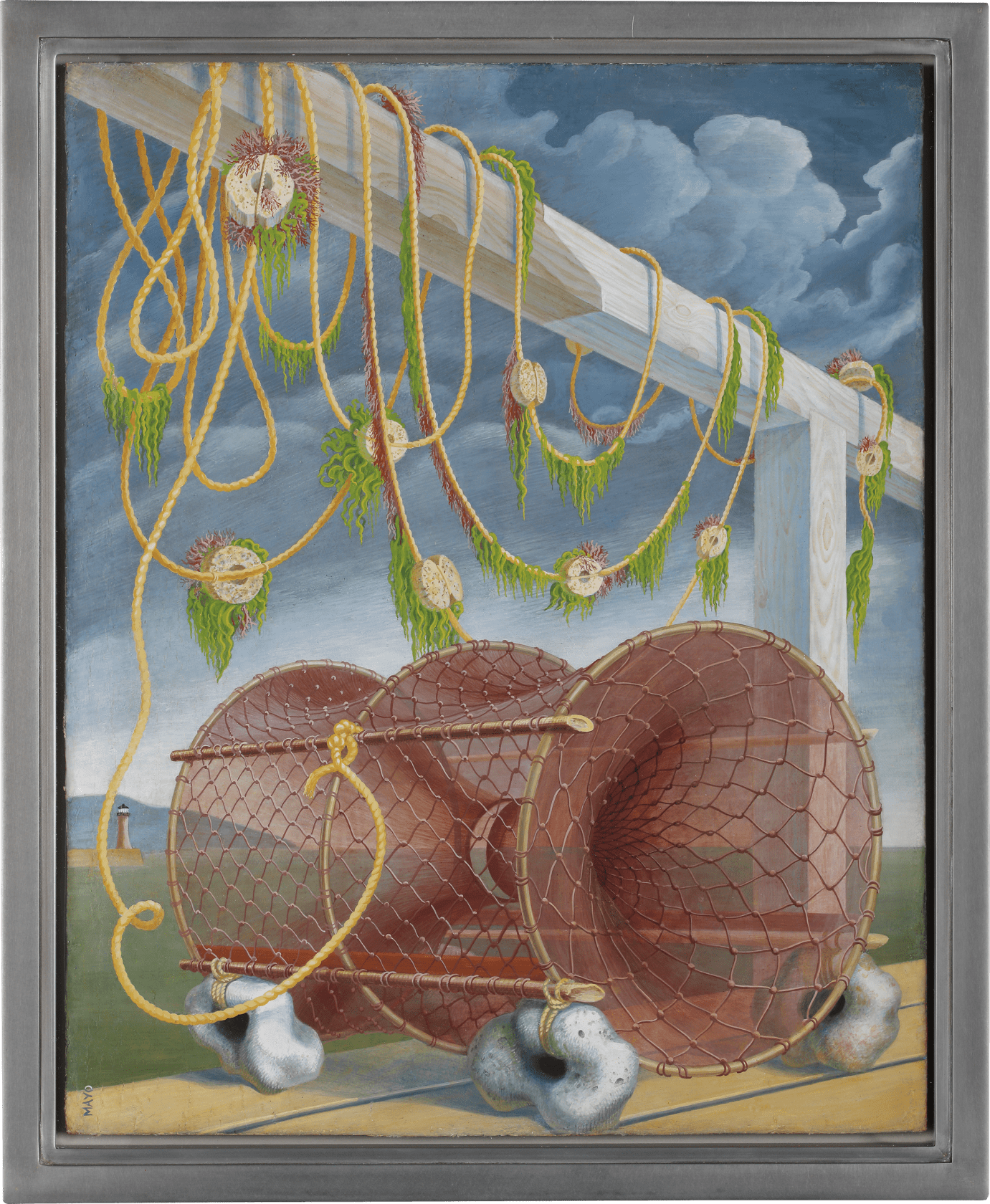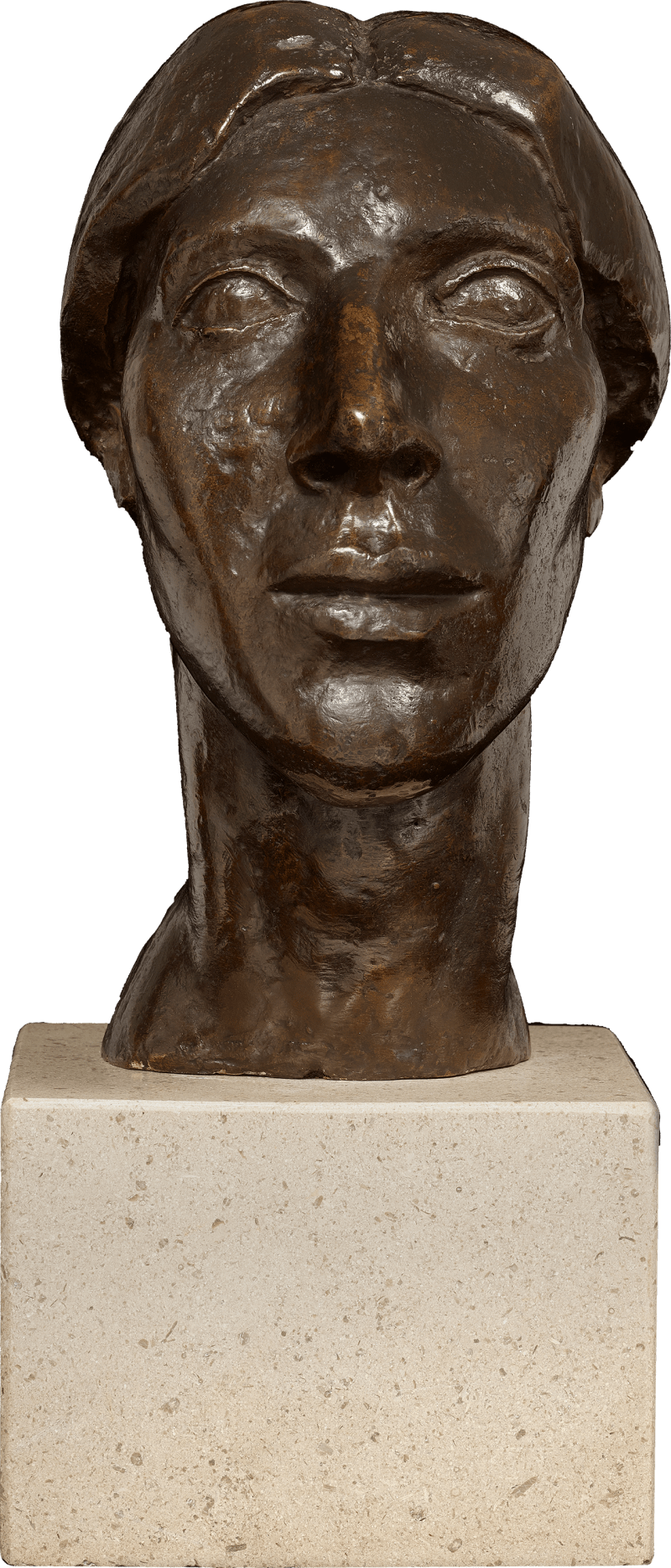Eileen Mayo was a talented British-born artist most celebrated for her vibrant depictions of nature. Her paintings in tempera, by far her most accomplished works, are also the rarest within her oeuvre and reflect a profound appreciation for the natural world. Mayo's contributions to the art scenes in Australia and New Zealand solidified her reputation, where she is celebrated to this day.
Lobster Pot is dreamlike in its subtly surrealist composition. Depicting a lobster pot in the foreground of a seascape, the unusual perspective and hyper-realist detail exemplifies Mayo’s mastery of the difficult medium, tempera. Mayo also appears to wryly reference the loaded symbolism of lobsters within the surrealist movement, which was brought to public attention when Salvador Dali created his Lobster Telephone in 1936. After the Second World War, Mayo began to work in tempera which lent itself to her meticulously detailed working method. The quick drying properties of tempera appealed to Mayo, enabling her to add intricate layers...
Eileen Mayo was a talented British-born artist most celebrated for her vibrant depictions of nature. Her paintings in tempera, by far her most accomplished works, are also the rarest within her oeuvre and reflect a profound appreciation for the natural world. Mayo's contributions to the art scenes in Australia and New Zealand solidified her reputation, where she is celebrated to this day.
Lobster Pot is dreamlike in its subtly surrealist composition. Depicting a lobster pot in the foreground of a seascape, the unusual perspective and hyper-realist detail exemplifies Mayo’s mastery of the difficult medium, tempera. Mayo also appears to wryly reference the loaded symbolism of lobsters within the surrealist movement, which was brought to public attention when Salvador Dali created his Lobster Telephone in 1936. After the Second World War, Mayo began to work in tempera which lent itself to her meticulously detailed working method. The quick drying properties of tempera appealed to Mayo, enabling her to add intricate layers of detail within her work, whilst maintaining a matt, smooth surface finish. Very few artists were using tempera at this date; not only was it a more difficult medium to master compared to oil paint but, crucially, eggs were scarce throughout the 1940s due to rationing. Determinedly, Mayo would use the family’s egg ration to bind her tempera.[1]
Mayo was continually experimenting in different materials and mediums, making little to no distinction between fine and applied arts. She worked as a printmaker, illustrator, designed tapestries, stamps, coins and printed posters. Although she is now best known for her printmaking, Mayo maintained her painterly ambitions and set her sights on exhibiting her paintings at the Royal Academy, which she achieved in 1948. She stated “I am especially concerned about the texture of paint. I like to think that if a small piece were removed from any part of a picture it would be interesting in itself.”[2] In the case of Lobster Pot, the smooth surface was clearly a priority for the artist with the intricate brushwork barely visible on account of her punctilious working method.
In 1952, shortly after the completion of this painting, Mayo moved to Australia where she contributed significantly to the country’s art scene. She was embraced by the artistic community and was invited by the Australian National Travel Association to produce posters advertising Australia as a tourist destination. Over the following years, she painted murals for the likes of the Australian Museum in Sydney and was commissioned by the Australian Stamp Advisory Committee to produce six iconic designs for circulation across the country.[3] She continued her printing practice with aplomb and, three days before her death in 1994, her significant status in the artworld was recognise when she was made a Dame of the British Empire.
[1] Recalled by John Gainsborough, the artist's stepson.
[2] Eileen Mayo quoted in Mary Sorrell, (1949) ‘Eileen Mayo’, in Apollo. vol. 74 (320), 1949, p.111.
[3] Sara Cooper, (2021) Eileen Mayo. London: Eiderdown Books, p.38.











